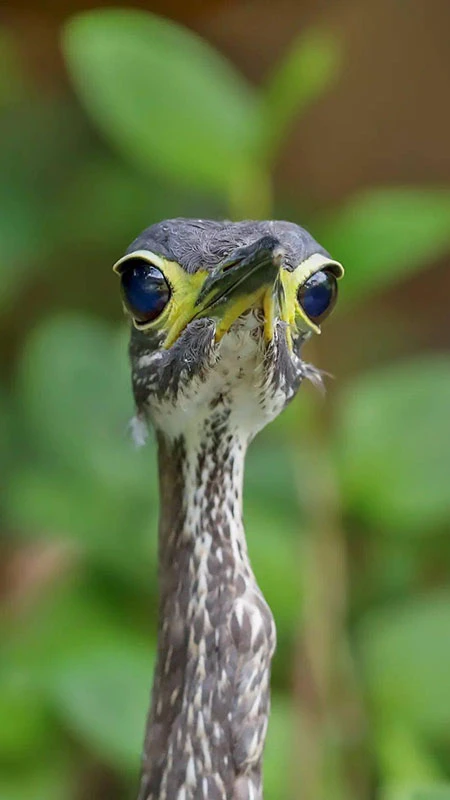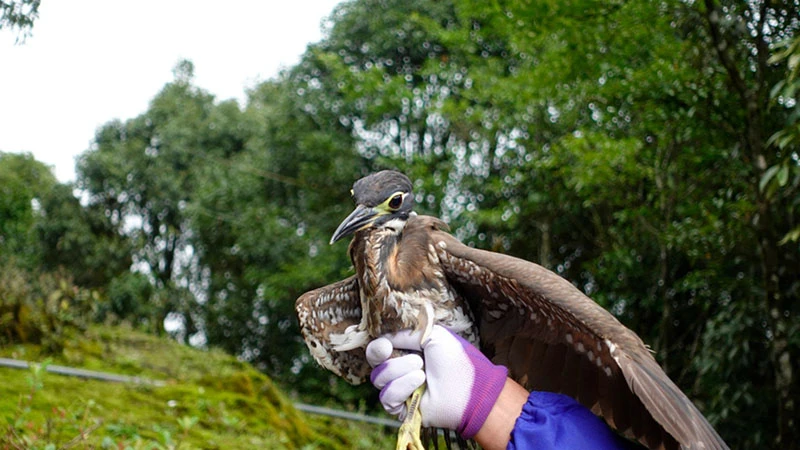Deep in the heart of Yunnan Province, China, lies Ailao Mountain (哀牢山), a place of remarkable biodiversity and mysterious landscapes. Recently, this mountain range has become the focal point of conservation efforts after the discovery of one of the world’s rarest birds, the white-eared night-heron. With fewer than 1,000 individuals remaining in the wild, this bird’s sighting in Ailao Mountain has sparked global interest and heightened awareness of the need to protect endangered species.
Ailao Mountain: A Biodiversity Hotspot
While the Ailao Mountain range may not be widely known, it is a crucial migration corridor for many bird species. Spanning nearly 500 kilometers, it connects the eastern and western halves of Yunnan, providing a critical pathway for over 200 species of migratory birds. These birds cross the mountain every year, making it a key point for birdwatchers and researchers like Zhao Xuebing (赵雪冰), a prominent ornithologist and conservationist.
For Zhao, Ailao Mountain is not just a place of work, but a treasure trove of ecological diversity. Over the last two decades, he and his team have been studying the nocturnal migration patterns of birds in this area, using banding techniques to track their movements. Their research has yielded vital data on how species like the white-eared night-heron migrate and survive. In 2006, they discovered the white-eared night-heron (海南鳽) in Ailao Mountain for the first time, and since then, sightings have continued yearly—a promising sign that the population is stabilizing.

The Mysteries of the White-eared Night-heron
Often referred to as one of the most enigmatic birds on the planet, the white-eared night-heron is endemic to China. Its small population makes it even rarer than the giant panda, and it has been listed as one of the 30 most endangered bird species in the world. The white-eared night-heron typically breeds in the southern and central provinces of China, but during the autumn migration season, it travels to the Sino-Burmese border and parts of Southeast Asia. What makes Ailao Mountain particularly important is its role as a resting point during this long journey.
In Zhao’s words, “The white-eared night-heron’s presence here shows that Ailao Mountain is more than just a migration path; it’s a sanctuary.” The discovery of the bird for four consecutive years highlights the importance of preserving the mountain’s unique ecosystem. For Zhao and his team, each sighting is not only a moment of scientific triumph but also a reminder of the fragility of these species.
The Threats Facing Migratory Birds
Ailao Mountain may be a refuge for birds, but the species that pass through it face numerous threats. Human activities such as deforestation, habitat destruction, and illegal poaching have severely impacted bird populations worldwide. One such species is the yellow-breasted bunting, which, despite being common decades ago, has seen its numbers dwindle to near extinction. Once abundant, the bunting has now been listed as critically endangered due to illegal hunting practices across its migratory route.
The birds of Ailao Mountain, especially those like the white-eared night-heron, face additional risks due to climate change. As temperatures fluctuate, these birds may struggle to find suitable habitats during their migrations, leading to population declines. For example, Zhao recounts how the sudden drop in temperature and heavy fog in Ailao can be deadly for birds unaccustomed to such harsh conditions. During his years in the field, he has witnessed the toll that these environmental changes take on migratory birds.
In addition to climate and human-related threats, the geography of Ailao Mountain itself poses unique challenges. Its rugged terrain is home to a number of predators, including bears and snakes, which pose a danger not only to the birds but to the researchers themselves. Zhao recalls an encounter with a bear that had left the remains of a cow near their research station, a chilling reminder of the hazards that exist even in these remote natural sanctuaries.



